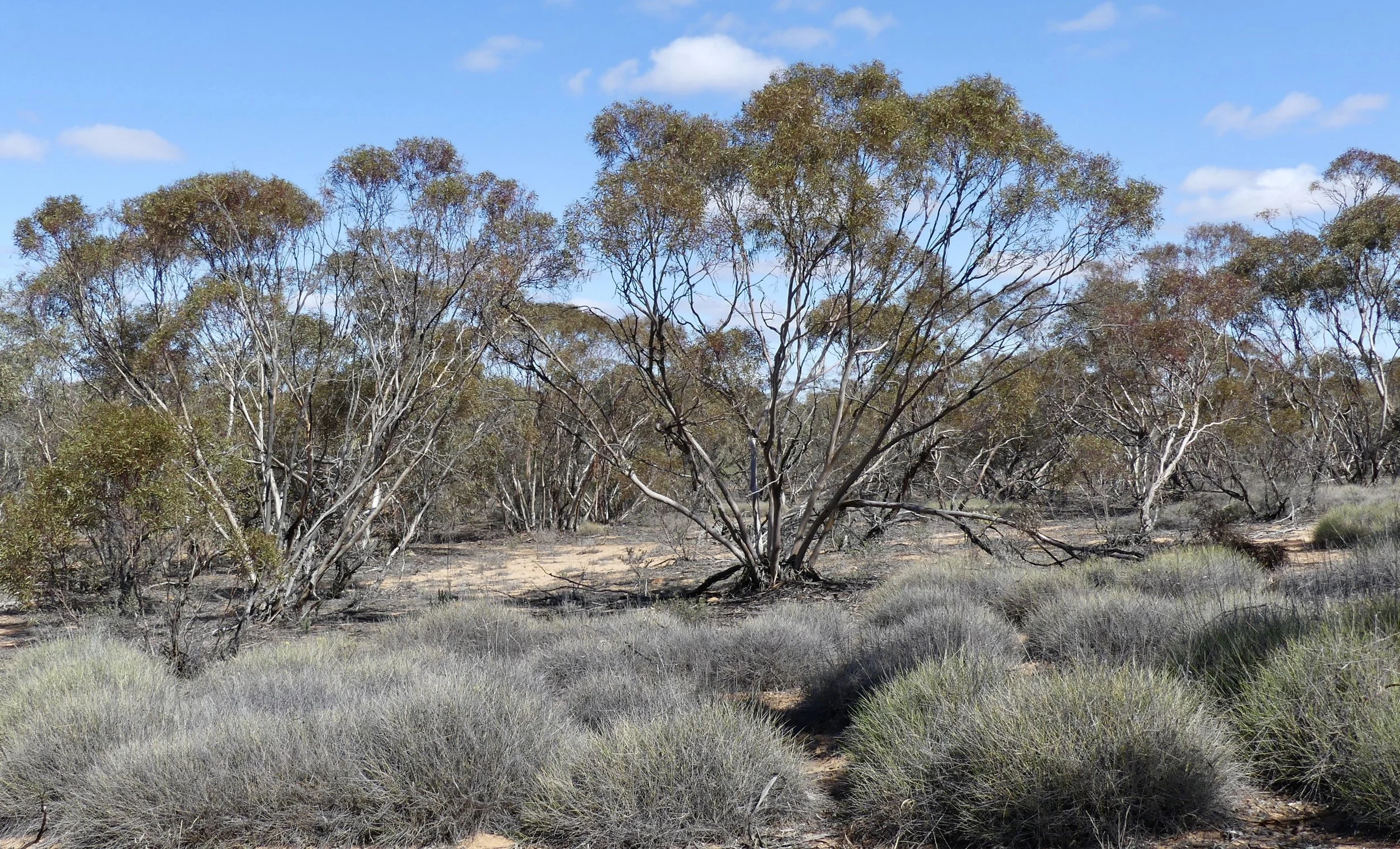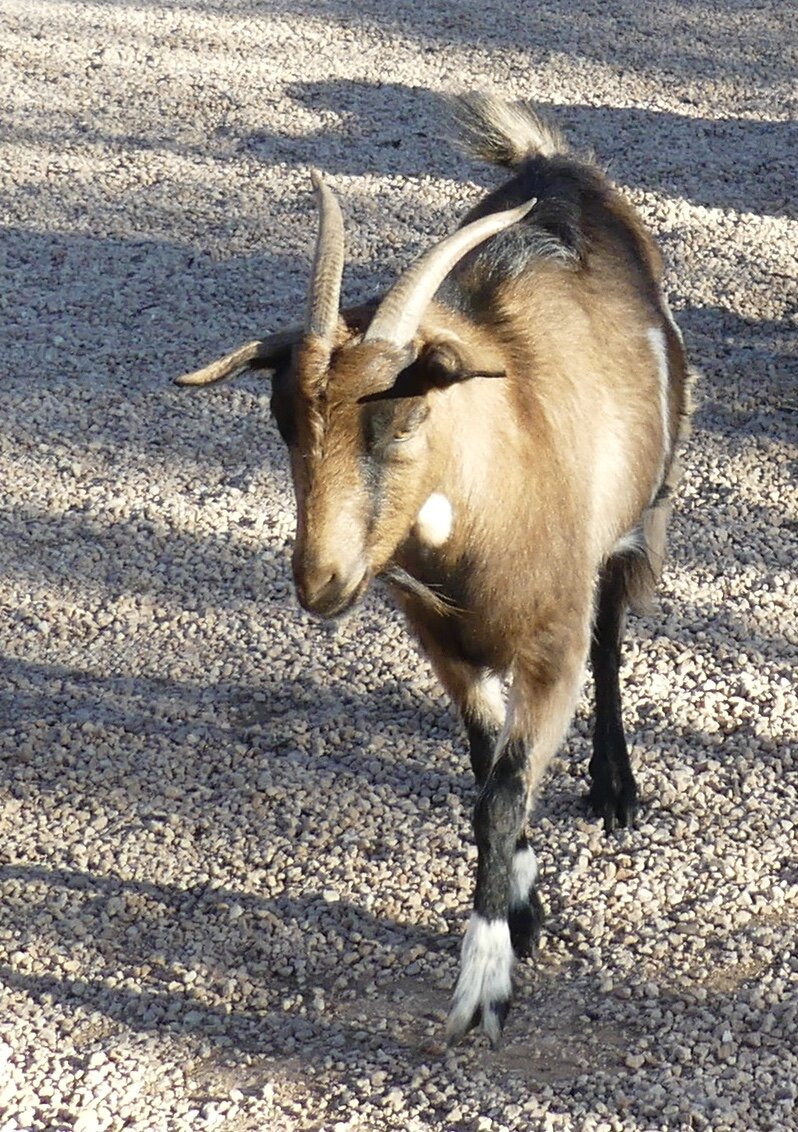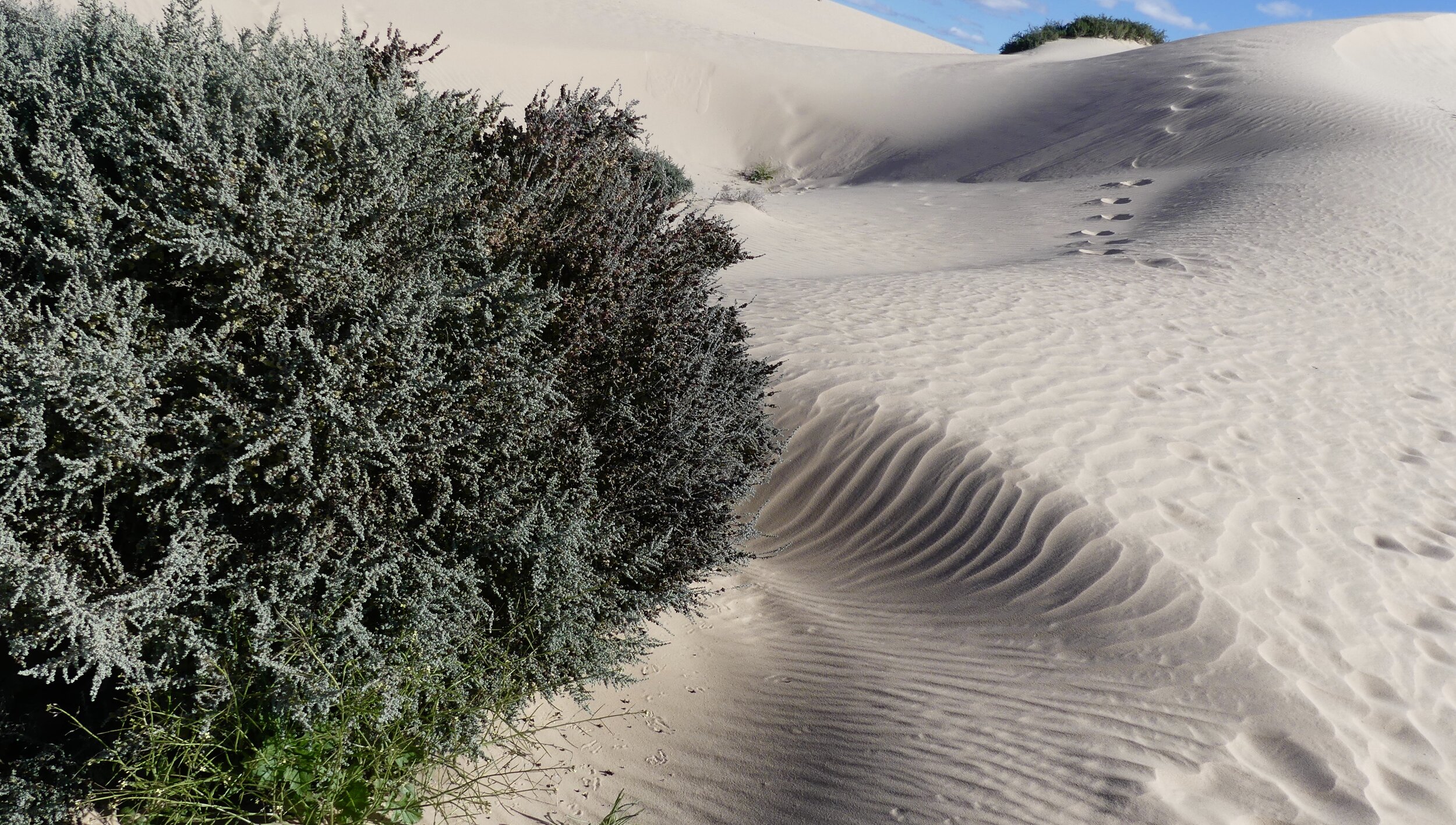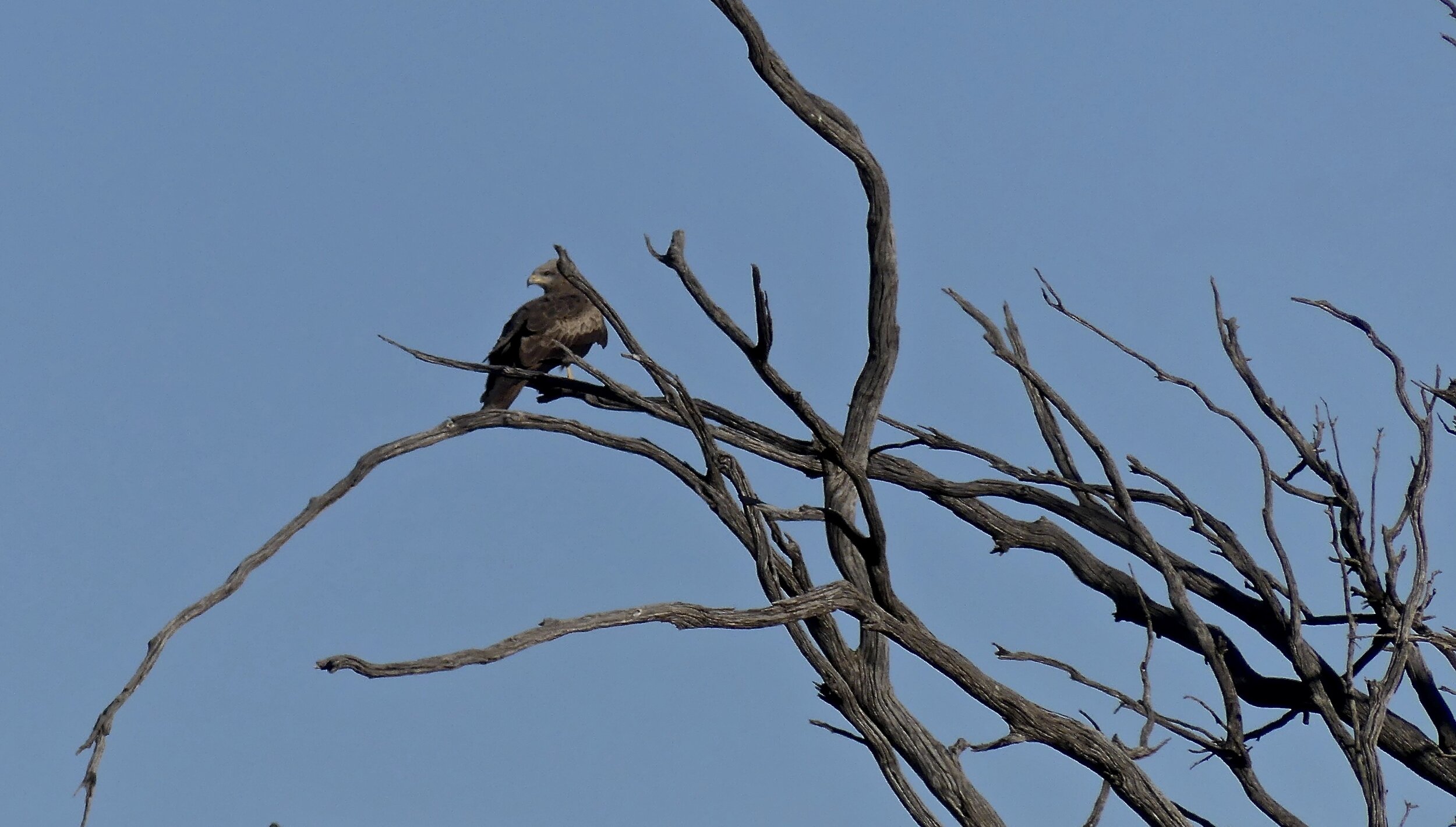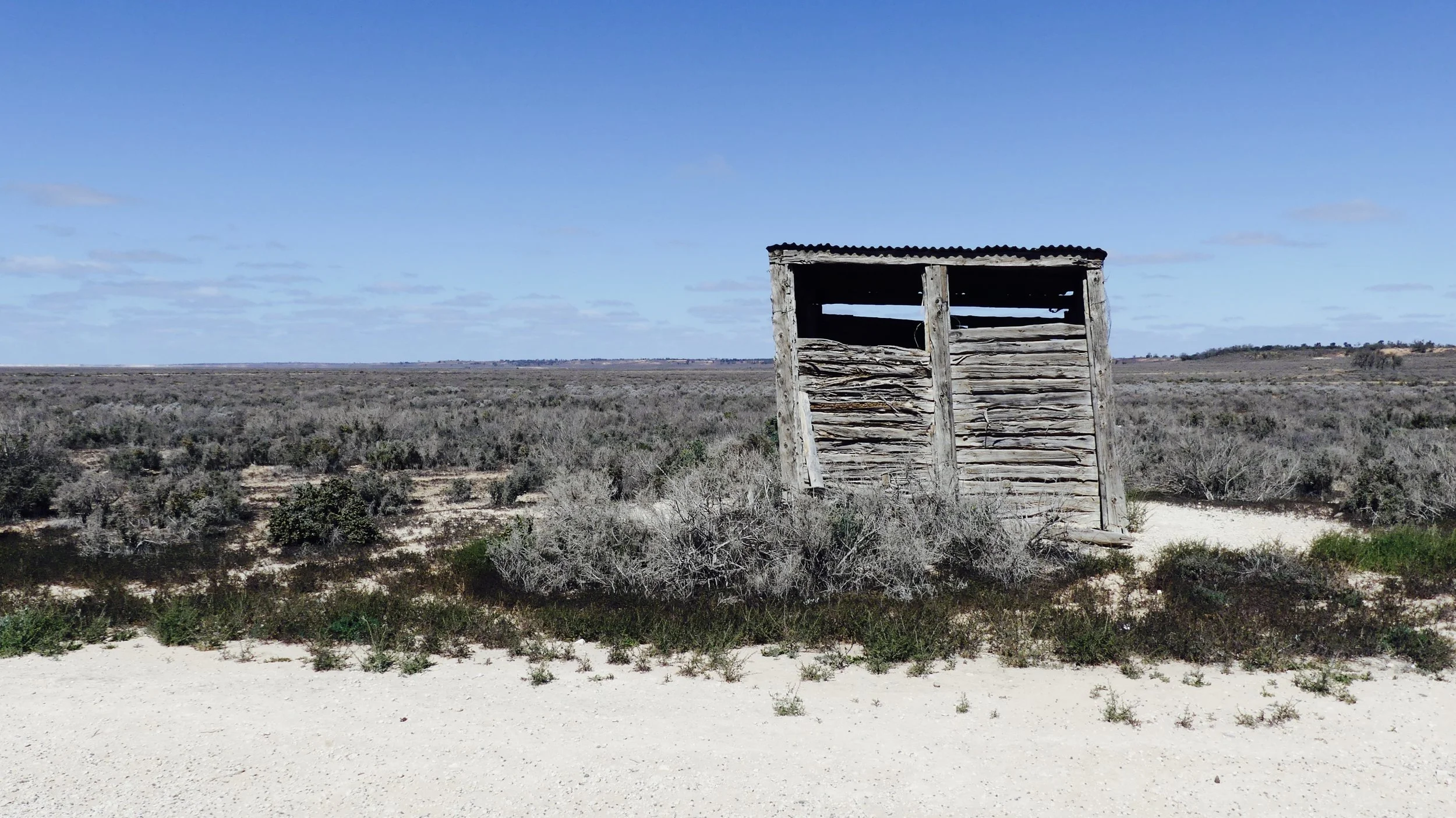Mallee, spinifex, rock and dune
The Mungo Track is a 70-kilometre loop ‘around the heart of Mungo’, as the Willandra Lakes Region World Heritage Area brochure describes it. A 4WD vehicle is helpful but not essential. You can easily drive the Track in a day, or you can camp at Belah, roughly halfway round, and take more time to soak up the different landscape vibes. The track is one-way from Red Top Lookout onwards (see map below).
From Mungo’s Visitor Centre you head east across the ancient lake bed towards the Mungo Lunette and The Walls Lookout, where we’d been at sunset the previous day. The Lunette was nicknamed the Walls of China, some believe, by 19th-century Cornish miners who were reminded of china clay (kaolin) deposits back home.
Once at the Walls, and beyond at Red Top Lookout, there were striated outcrops, mini badlands, tiny birds darting, and wildflower carpets following recent rain.
Rufous Songlark
White-fronted Chat
Mallee (the emphasis is on the first syllable, as in Mary), is both a biogeographical region in northwestern Victoria and a habit of vegetation growth, whereby woody plants produce multiple stems from a large underground root (lignotuber). You can imagine how extensive dense thickets seriously imperilled the progress of early explorers encumbered by loaded wagons, all kinds of animals – camels in some cases – and equipment.
I find the mallee habit fascinating. At the Mallee Stop on the Mungo Track, three different species can be found alongside another favourite of mine, spinifex. I hadn’t seen spinifex fields since we were in far western Queensland. Both narrow-leaf mallee and spinifex prefer the light sandy soils of dunes. Sharp, tightly rolled spinifex leaves reduce evaporation, prevent the plant from being grazed, and provide protection for small reptiles and mammals.
The impenetrability of mallee
Eucalyptus gracilis, or white mallee
Eucalyptus dumosa trunks
Mallee Dragon
Next up along the Track was Round Tank.
Around the enclosure was what looked like a recently constructed fence. Not sure how goats negotiate gates.
A little further on was a small dam that had attracted a lone Galah, which is quite rare – they are almost always in pairs or larger groups – and a camera-shy Willie Wagtail.
Our next encounter, on the way to Vigars Well, was a less serene experience. This Shingle-back (or Stumpy-tail, Two-headed, Sleepy or Pinecone) lizard is technically a Blue-tongued Skink. He wasn’t a fast mover, and I feared for his life as a 4WD hurtled towards us on the other side of the track. But Stumpy turned back as I gestured to the vehicle to cut its speed. Stumpy didn’t like me waving my arms about. He showed me his blue tongue before heading to safety.
A short detour off the Track, Vigars Well is a natural soak that was used by Aboriginal people during drought and transient Europeans who needed to water horses and other animals. Rather more impressive were the nearby dunes, at the back of the northern section of the Walls of China. There was nothing to say we couldn’t climb…
From here the Track heads northwest before turning south towards the Visitor Centre. On the corner is a view over Lake Leaghur, north of Lake Mungo.
Another day, another ancient lake bed
And then one last treat: a Wedge-tailed Eagle surveying all before him.

